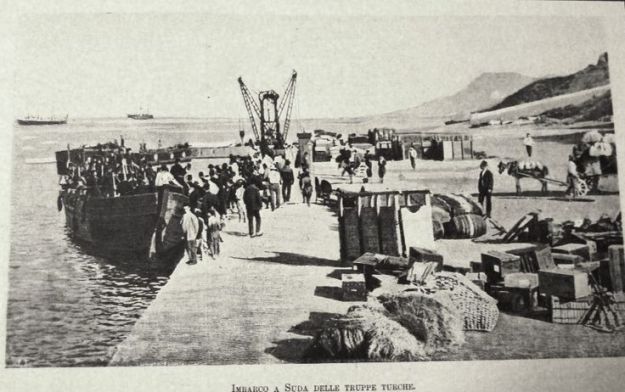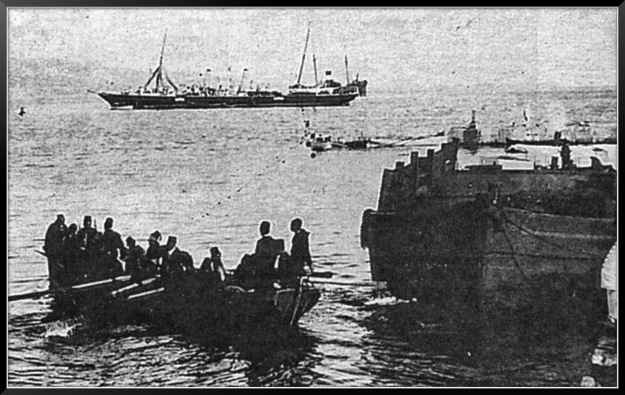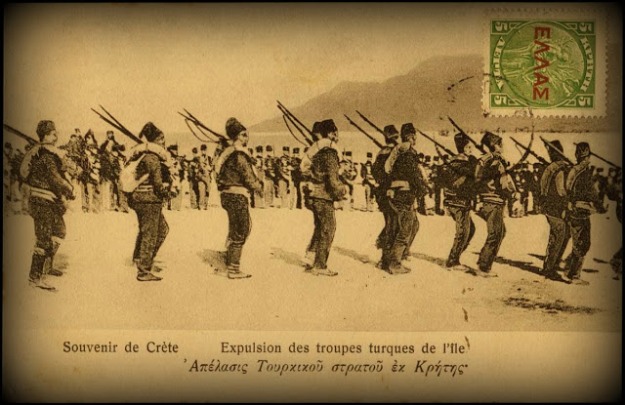As recorded elsewhere, flags, and the use and misuse of them, were a reoccurring motif throughout the period immediately prior to, and during, the European Intervention in Crete.
According to the “San Fransisco Call”, Volume 80, Number 75, 14 August 1896, the ‘Provisional Government of Crete’ had chosen their new flag. Ignoring the fact that body in question was probably the one called ‘The General Revolutionary Assembly of the Cretans’ and that they didn’t have a state for the flag, it does illustrate the fluid nature of the Cretan Christians’ political claims during this era.
The Central Political Committee of Crete, set up in 1895 which morphed into ‘The General Revolutionary Assembly of the Cretans’ in 1896, was NOT seeking enosis, union with Greece, but rather autonomy within the Ottoman Empire. (Had they been seeking enosis, there would have been no call or need for a flag other than that of Greece, since Crete would not have been a state in its own right.) In the end, the abortive uprising of 1896 petered out with the usual atrocities being committed by both sides. It did however, result in the replacement of the existing, Christian, Governor by a more hard-line Muslim It also brought forth a proposed new Constitution for the island as well as guarantees of more public jobs for Cretan Christians and the re-organisation of the Gendarmerie under European officers.
By early 1897 though, the proposed settlement had collapsed amid accusations of bad faith by both Christians and Muslims, resulting in a further insurrection by Cretan Christians, the attempted annexation of Crete by Greek troops, and the Intervention by the European Powers.
In the turmoil that followed, the proposal for this new flag was quietly forgotten.

















